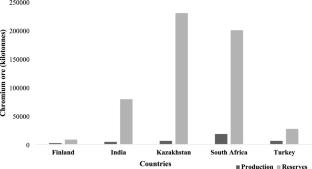Review on the robustness of technologies and strategies in removal of hexavalent chromium: a biological perspective
Abstract
A contemporary issue arising from global industrial and economic development over the past few decades is the pollution of the environment. Chromium (Cr) is a heavy metal used in numerous industries that can build up in the surrounding ecosystem due to improper disposal techniques. Chromium pollution can cause toxicity in both the local flora and fauna. Bioremediation is perceived as an alternative to conventional treatments to mitigate chromium pollution and has thus been extensively developed in recent years. Among the various biological organisms, bacteria possesses desirable characteristics and can be cost effective while treating the pollutants. Numerous mechanisms have been evolved by bacteria to combat toxicity triggered by chromium exposure. Plant growth promoting bacteria have also evolved with mechanisms that impart resistance to susceptible plants upon chromium exposure. Large scale chromium remediation requires the use of bioreactors that can effectively utilize bacteria and nullify the toxic form of Cr. The robustness of these techniques can be increased by combining them with conventional techniques such as precipitation, filtration, etc. Case studies have also been discussed to determine their relevance in the bioremoval of Cr. The future aspects of chromium bioremediation in accordance to the omics approach has been discussed so as to understand the fate of Cr upon treatment using biological methods. This review highlights the various toxic effects that have been observed in various flora and fauna while providing insights into bacterial mechanisms that could resist Cr toxicity and their possible applications defined in terms of robustness in ex situ as well as in situ remediation technologies.
Graphical abstract


 求助内容:
求助内容: 应助结果提醒方式:
应助结果提醒方式:


